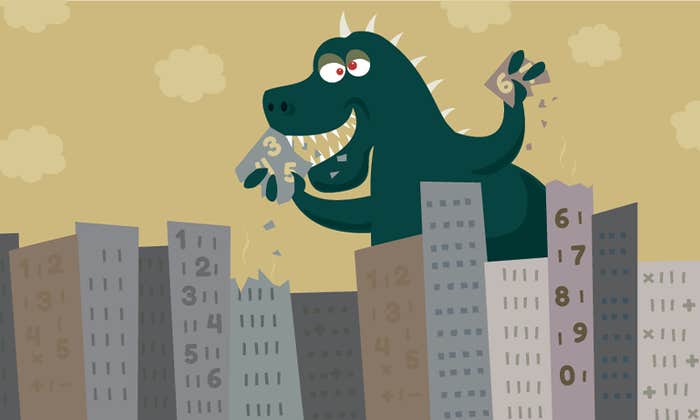Whenever I fly, I like to talk to the person sitting next to me. Once in a while, I find that we know at least one person in common. If you are like me, perhaps coincidences such as this happen in your life as well.
The most unusual coincidence in my life took place when I flew from Boston, my home, to Chicago to meet Scott Isenberg, the new editor assigned to revise a statistics textbook I had authored a few years earlier. We were having dinner at a restaurant overlooking Lake Michigan, and Scott began to talk nostalgically about the orange groves that graced his neighborhood in a small town in California, where he grew up. I recalled that my wife, Debra, who is also from California, used to talk about orange groves as well. We both smiled and continued our conversation—after all, the state has 38 million people. But every remark he made about his childhood abode reminded me of something that my wife had told me. As we continued to notice more of these coincidences, I told him Debra’s name and he literally jumped out of his chair. It turned out that they had been friends in high school. You might think, what is the probability of such a rare event? It may be one in many millions.
The simple question might be “why do such unlikely coincidences occur in our lives?” But the real question is how to define the unlikely. You know that a situation is uncommon just from experience. But even the concept of “uncommon” assumes that like events in the category are common. How do we identify the other events to which we can compare this coincidence? If you can identify other events as likely, then you can calculate the mathematical probability of this particular event as exceptional.
The simple question might be “why do such unlikely coincidences occur in our lives?” But the real question is how to define the unlikely.
Probabilities are defined as relative measures in something called the “sample space,” which is the set of all possible outcomes of an experiment—such as drawing a card out of a well-shuffled deck, rolling a fair die, or spinning a roulette wheel. We generally assume that every elementary outcome of the experiment (any given card or any of the possible numbers, in the case of dice or roulette) has an equal likelihood, although the theory can handle sample spaces with varying likelihoods as well. If we can define a sample space in a real-world situation that may not involve a game of chance, then we can measure probabilities through this sample space.
In its essence, the idea of coincidences could be explained (somewhat simplistically) using a deck of cards. Drawing the ace of spades out of a well-shuffled deck of 52 cards is a relatively rare event: Its probability is only 1 in 52. We compute it using the mathematical rule that divides the size of the event, one card (if we’re talking about drawing any ace, this would be a size of four), by the size of the sample space for drawing a card out of a deck, which is 52, the total number of cards.
But if every day of your life you draw a card out of a deck, you can be sure to see the ace of spades sometimes. In fact, you expect this to happen roughly once in 52 draws. It is the fact that cards can be drawn repeatedly out of a deck (with reshuffling after every draw) that makes rare events show up.
This is essentially what happens in our lives. We are exposed to possible events all the time: some of them probable, but many of them highly improbable. Each rare event—by itself—is unlikely. But by the mere act of living, we constantly draw cards out of decks. Because something must happen when a card is drawn, so to speak, the highly improbable does appear from time to time.
If every day of your life you draw a card out of a deck, you can be sure to see the ace of spades sometimes.
It is the repetitiveness of the experiment that makes the improbable take place. The catch is that you can’t tell beforehand which of a very large set of improbable events will transpire. The fact that one out of many possible rare outcomes does happen should not surprise us because of the number of possibilities for extraordinary events to occur. The probabilities of these singly unlikely happenings compound statistically, so that the chance of at least one of many highly improbable events occurring becomes quite high.
So if Scott and Debra had not been friends in high school, I could have found out at some point in my life that my father—rather than my wife—was the friend of the father of the person sitting next to me on a transatlantic flight. Or that my sister took piano lessons from the mother of my new neighbor who’d just moved here from another state. All of these are rare events, but we are exposed to so many possibilities for them to occur that, even though they are rare, some of them have to happen.
Such an event has a tiny probability of occurring only if we specify beforehand that this is what will happen. If I went to Chicago expecting Scott to know my wife, its occurrence would be an event of fantastically small probability. Within the possible occurrence of millions of other coincidences in my life, it shouldn’t shock me that I did once observe a very unlikely coincidence.
Coincidences and their analysis have led to important academic research in all areas where probability plays a role. Persi Diaconis, professor of statistics at Stanford University, describes extremely unlikely coincidences as embodying the “blade of grass paradox.” If you were to stand in a meadow and reach down to touch a blade of grass, there are millions of grass blades that you might touch. But you will, in fact, touch one of them. The a priori fact that the blade you touch will be any particular one has an extremely tiny probability, but such an occurrence must take place if you are going to touch a blade of grass.
Mathematically, the sample space (in this case, a field of grass) is made up of many elementary outcomes, which are the particulars of a sample space—a single card, in the card-drawing example, or a blade of grass in Diaconis’ paradox. Elementary outcomes can then be classed into larger events. Drawing an ace is the event made up of the four aces, so the event has four possibilities out of the sample space of 52. While the relative size of each event determines its probability, philosophically we may look at an experiment as being made up of many elementary outcomes, all of them equally likely.
If you were to stand in a meadow and reach down to touch a blade of grass, there are millions of grass blades that you might touch. But you will, in fact, touch one of them.
This means that we assume that any card has just as good a chance of being picked as any other, and so does every blade of grass in a meadow. Thus the knowledge that one elementary outcome must happen, should make us realize that the unlikely and the likely both can take place. It’s a matter of frequency. Events that contain many elementary outcomes are more likely than those with few of them: Drawing any ace is four times as likely as drawing the ace of clubs.
The devil is in the details of how we interpret what we see in life. And here, psychology—more so than mathematics or logic—plays a key role. We tend to remember coincidences such as the one I experienced with my editor Scott and conveniently forget the thousands of times we may have met someone and had a conversation finding absolutely nothing in common. We remember the time we rushed through security, ran to the plane, and made it just in time for the airplane’s door to shut behind us, and forget all the times we sat waiting for hours in airport terminals. And we also seem to be hardwired to exaggerate the chance events in our lives—because they provide us with good cocktail party stories. Psychological factors can well mask the probabilistic reality. All these factors, mathematical, interpretational, and psychological, affect how we view and understand the rare events in our personal lives.
We also need to identify the correct sample space, and there is no obvious, unique way of doing this. In probability theory, we usually assume that every elementary outcome is equally likely. So whom do we include in such an analysis when trying to understand a coincidence such as mine? Would it be all Americans? All Americans within certain professions? All Americans within certain socioeconomic classes? In the case of a coincidence on a flight, you could exclude all Americans who don’t fly, or don’t fly often—but here, the coincidence did not include people who fly (it was only I who flew). Since there may be no “correct” way to identify a sample space in many cases involving rare events, the occurrence of such startling coincidences in everyday life may well remain a mystery.
The late Amir D. Aczel was the author of a dozen nonfiction books on the subjects of science and mathematics, most of which have appeared on various bestseller lists in the United States and abroad. He has appeared on more than 50 television programs and has published science articles in Scientific American, The New York Times, and others. He was a Guggenheim Fellow and a research fellow in the history of science at Boston University.
This article was originally published in our “The Unlikely” issue in August, 2013.






























